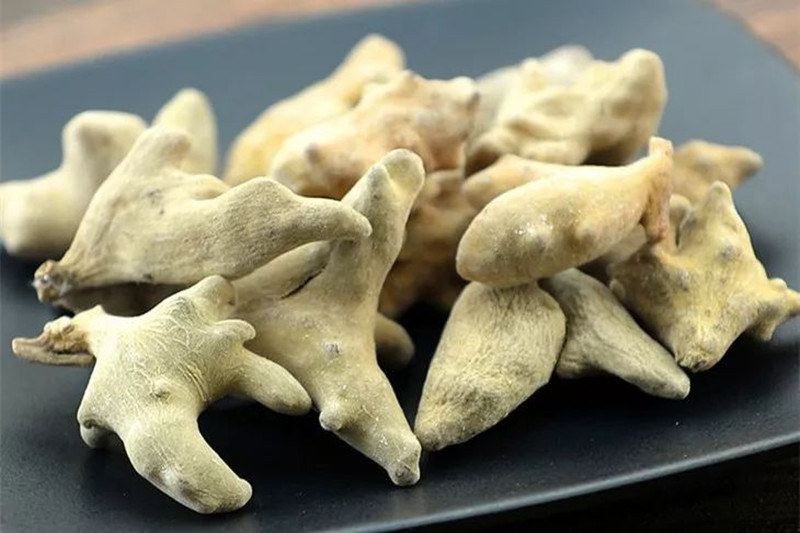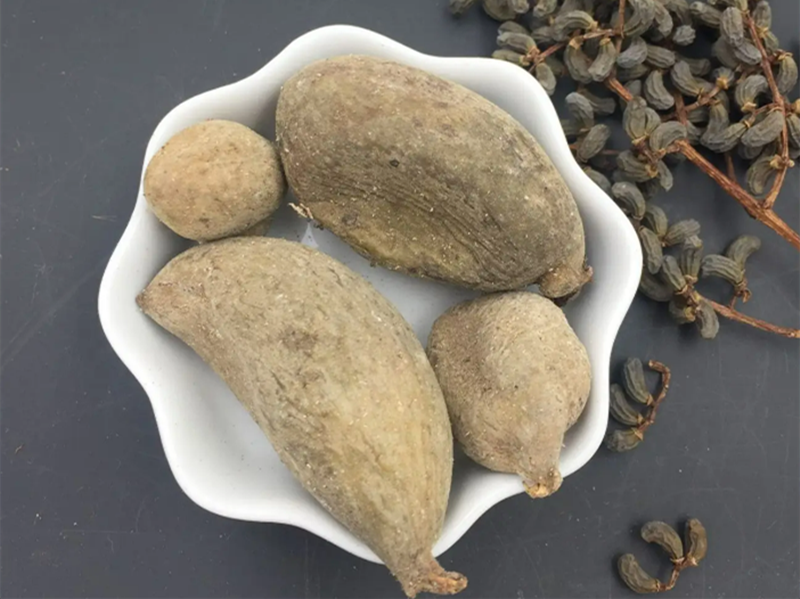Applications of Gallnut Gallnut Extract Powder
Gallnut is plant excretion produced by the activities of a type of larvae of gall insects, which got its name from the shape that hardens to become the “nut”. Gallnut is produced by oak trees or Chinese sumac as a defense against insects that deposit their eggs in punctures they make on young branches. Gallnuts have been used as a medicinal plant for hundreds of years and their therapeutic benefits are recorded in ancient TCM pharmacopeias. The Chinese medical compendium Tang Materia Medica recorded the medicinal use of gallnuts (Galla Chinensis and Galla Turcica) to treat diarrhea by eliminating toxic substances and rebalancing the normal gastrointestinal environment. Gallnut extract is a natural compound, containing 80% polyphenols, Oak gallnut extract contains high amounts of ellagic acid, gallic acid and and hydrolysable tannins. It has anti-inflammatory, antimicrobial, astringent and antioxidant properties, which exert multifunctional skin conditioning effects. Gallnut extract is also a rich source of vitamins, minerals and amino acids. Here we will introduce the applications of gallnut extract.
Applications of Gallnut Extract
TCM
The medicinal and pharmacological benefits of gallnuts are mainly attributed to their phytochemical compounds. Based on the theories of Traditional Chinese Medicine (TCM), gallnuts are believed to clear pathogenic heat and toxins and rebalance endogenous physical conditions. In traditional medicine, oak gallnuts (Quercus infectoria olivier or Aleppo oak) are used to treat a wide range of health problems, including nose and gum bleeding, hemorrhoids, and diarrhea. The high tannic acid content of gallnuts makes them strong astringents, which help to arrest bleeding and hemorrhage. They are also used to treat rheumatism and arthritis. It can also be used to treat oxidative stress-related diseases such as chronic fatigue and fibromyalgia.
Dyeing
The hydrolyzable tannins in gallnut extract are a key ingredient in traditional tanning, is a light yellow powder in granular form and can be dissolved in cold or hot water, and has been used to make leather, wool, silk, cotton, and other cellulosic fibers, and is a great substitute for madder or indigo for centuries. This natural colourant has low color and can be used in combination with other mordants, such as iron sulphate, to create dark shades of wool and silk. It’s found that The clear tannin from oak galls, Quercus infectoria, is a very valuable source of natural clear tannin for textile and dyeing applications. It is an excellent mordant for cellulose fibers and fabrics that cannot be treated with alum, It does not produce dust during handling and is very soluble in water. They are particularly useful for natural wool and cotton fabrics, especially in the pad-dry-cure process. This process results in a multifunctional fabric with no harmful chemicals. Additionally, oak gallnut extract has been shown to be an effective pre-treatment for cellulosic vegetable fibers before mordanting with madder or indigo.
Beauty and Cosmetic Products
The tannins in the gallnut extract are known for their astringent, antimicrobial properties and natural astringent properties which help dry oily skin and shrink pores. It is also a good antioxidant, antibacterial and antifungal agent that can be used in the beauty and cosmetic industry. In addition to its cytotoxic and antibacterial activities, gallic acid is also known to be an antioxidant, which can prevent oxidative stress and inflammation, and even reduce the effects of aging by increasing the levels of cellular energy. It can be used in the manufacture of a variety of skincare products, such as cosmetic creams and lotions to promote healthy skin tone and texture. It is also known to enhance UVB protection against sunburns by inhibiting the formation of free radicals in the skin.
Anti-cancer Drugs
The results of recent scientific studies on the anticancer aspects of gallnuts provide scientific evidence to support their traditional uses based on TCM theory and encourage further phytochemical evaluation and pharmacological investigation. The ellagic acid in the gallnuts can prevent the formation of cancerous cells by inhibiting cell growth, blocking enzymes, and suppressing tumor necrosis factors. Ellagic acid can also block the proliferation of nasopharyngeal carcinoma cell lines, suggesting that it may be effective in treating nasopharyngeal cancer. Gallnuts and pure bioactive compounds extracted from them should be further screened for their potential anticancer properties, with the goal of developing powerful drugs derived from this natural resource.




